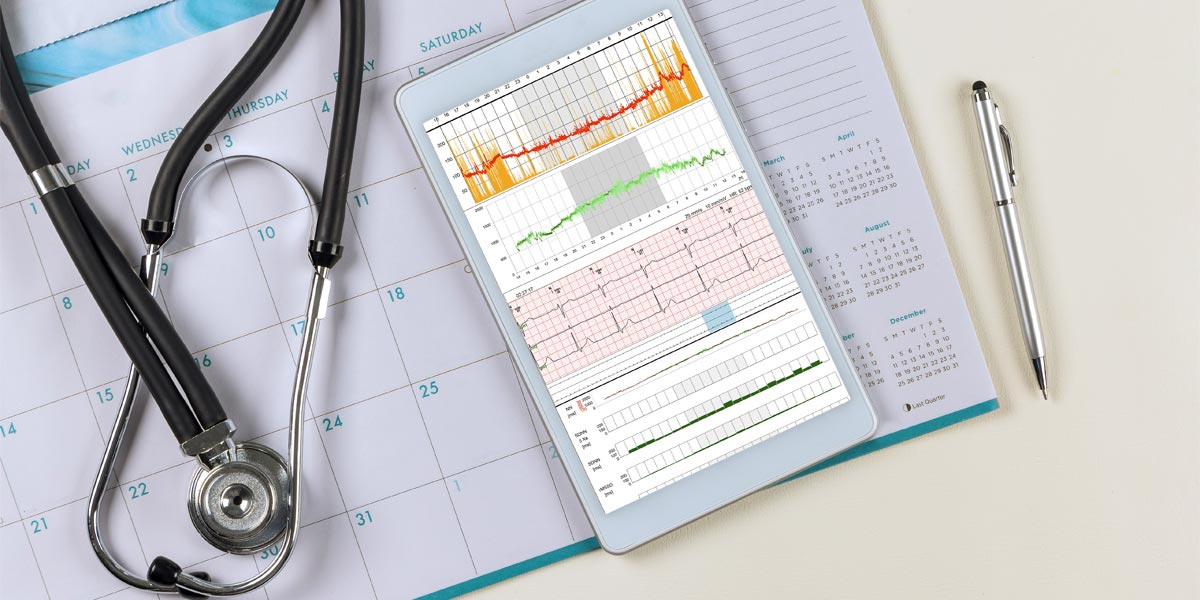Cardiovascular illnesses are the primary cause of death worldwide, accounting for one out of every three deaths. [1] Here are the five signs of an unhealthy heart you should not ignore.
1. Shortness of breath
The sensation of not being able to breathe correctly is known as shortness of breath. The patient’s lungs may feel heavy or driven to breathe quickly and shallowly. The underlying cause of shortness of breath is usually pulmonary or cardiac. A deadly pulmonary embolism may manifest itself first as shortness of breath. Shortness of breath might also develop over time. Aortic disease, arrhythmia, or heart failure could manifest as shortness of breath. A remote patient monitoring pulse oximeter may be recommended if you have a symptom of shortness of breath or a known lung or heart disease. The pulse oximeter is an electronic device that detects the oxygen saturation in red blood cells. The oxygen level may also evaluate whether you require supplemental oxygen.
2. Chest pain
Also known as angina, chest pain is one of the most evident signs of a failing heart. The heart is most likely the cause if a person feels pressure, pain, pinching, or burning in the chest. This pain is not affected by external pressure and can occur at rest or during physical activity. Even if the discomfort isn’t significant, it could suggest considerable heart problems and should be investigated. Remote patient monitoring electrocardiogram (EKG or ECG) can be used to record an EKG daily or whenever symptoms arise and share the recordings with the physician. Medical professionals can quickly assess rate and rhythm, screen for arrhythmias, and remotely monitor and manage patients.
3. Irregular heartbeat
An irregular heartbeat is formally referred to as “arrhythmias,” which implies your heart isn’t pumping blood at its standard rate. While an erratic heartbeat might be caused by being reasonably healthy, it can also be a sign of heart failure or a heart attack on the way. The leading causes of blood vessel abnormalities, such as an irregular heartbeat, are high blood pressure and coronary artery disease, which can indicate an unhealthy heart. Remote patient monitoring is designed to save, transport, and record single-channel electrocardiogram (ECG) rhythms. The application also shows ECG rhythms and detects atrial fibrillation and normal sinus rhythm. Healthcare professionals, people with known or suspected heart issues, and health-conscious individuals should use remote patient monitoring.
4. Swollen feet
This is another sign of an unhealthy heart. Swollen feet could indicate a deep vein thrombosis, leading to a pulmonary embolism. It could also be a sign of cardiac failure. This is because when the heart begins to pump inefficiently, blood is drawn closer to your lower extremities by gravity throughout the day. If your shoes, socks, or pants start to feel tight as the day progresses, you may be suffering from heart failure. A blood clot could be the following symptom, leading to a heart attack or cardiac arrest. Strict daily weight monitoring with remote patient monitoring can determine whether a patient is gaining too much fluid.
5. Easy fatigability
Changes in your body’s tolerance to exercise could be an early symptom of impending heart failure. When working out, keep an eye out for indicators like dizziness, chest discomfort, nausea, or shortness of breath, as well as other symptoms like dizziness, chest discomfort, nausea, or shortness of breath. Sweating excessively, especially a cold sweat, can be an indication of impending heart disease. These technologies can assist you in better comprehending your regular activities. Remote patient monitoring can keep track of your steps, your average heart rate, how long you sleep, and more. This information can then be synced with another device to reveal trends and patterns in your behavior.
Monitor Your Vital Signs through Remote Patient Monitoring (RPM)
Remote patient monitoring or RPM is one of the advancements in health technology that became popular during the COVID-19 era. RPM is equipped with home medical devices such as blood pressure monitor, pulse oximeter, wearable devices, etc., allowing users to measure their vital signs wherever they are (usually at home), such as blood pressure, heart rate, and oxygen levels. These health data are automatically and securely sent to their healthcare providers using a mobile application.
What are the advantages of RPM? It allows you to detect signs of health deterioration early such as signs of an unhealthy heart, enabling timely medical intervention when needed. Heart disease is the no. 1 killer of men and women in the U.S. The key is to be aware of its early signs, regularly monitor your health, and live a healthy lifestyle.
RPM is an integral part of today’s healthcare, but it is not a replacement for healthcare providers and a substitute for all disease treatments. Consult your doctor about your symptoms and how to incorporate RPM into your health management.
Reference:
- CDC. (2022, January 28). Heart Disease | cdc.gov. Centers for Disease Control and Prevention; www.cdc.gov. https://www.cdc.gov/heartdisease/index.htm








